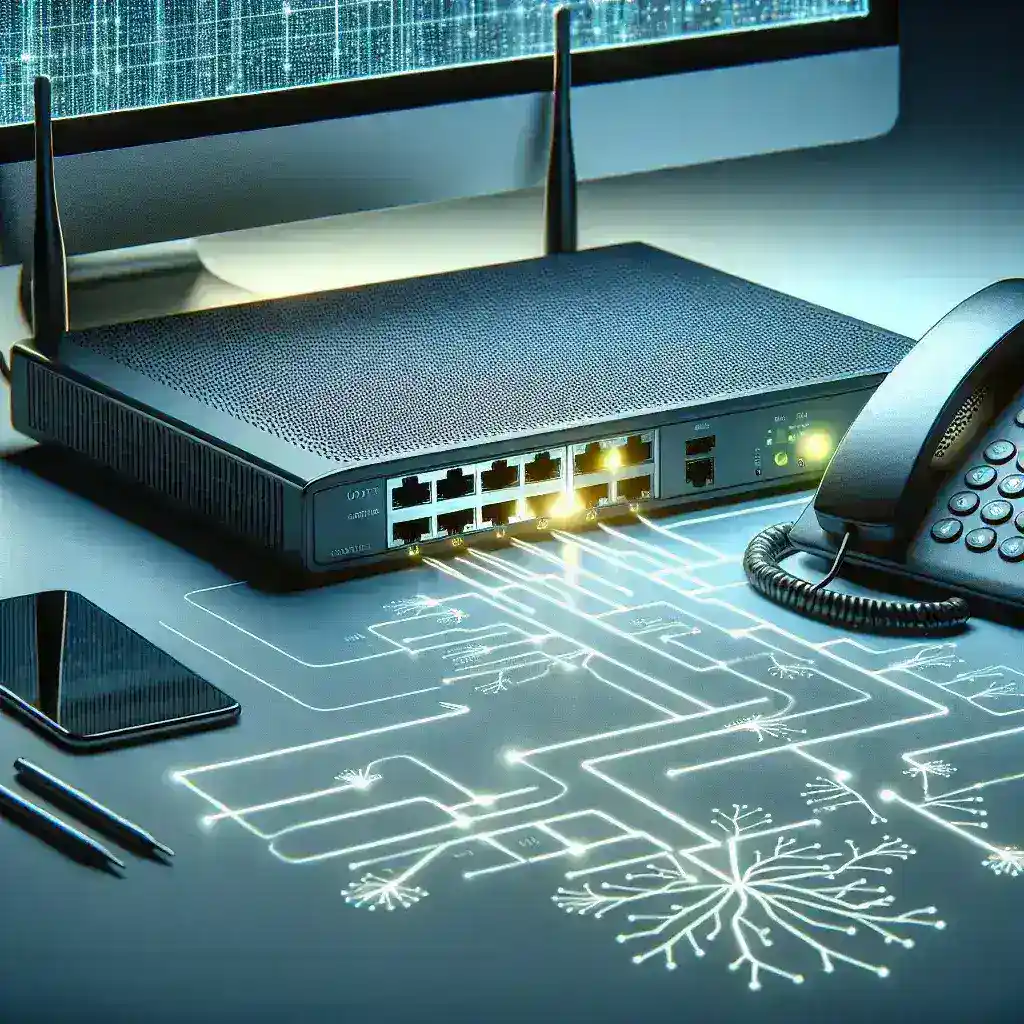Voice over Internet Protocol (VoIP) is a popular technology that allows users to make voice calls using an internet connection instead of a traditional analog phone line. Setting up a router for VoIP services can seem daunting, but with the right guidance, you can ensure high-quality voice communication and avoid common pitfalls. This comprehensive guide will walk you through the essential steps and configurations needed to set up your router for VoIP services.
Why Use VoIP Services?
Before diving into the setup, it’s important to understand why many businesses and individuals are opting for VoIP. Below are some key benefits:
- Cost Savings: VoIP services often offer lower rates compared to traditional phone services.
- Flexibility: Make calls from anywhere with an internet connection.
- Scalability: Easily add or remove lines as needed.
- Advanced Features: Access to features like call forwarding, voicemail, and more.
Essential Equipment
To set up a router for VoIP services, you’ll need the following equipment:
- Broadband Internet Connection: A high-speed internet connection is critical for clear voice quality.
- Router: A VoIP-compatible router.
- VoIP Adapter: If you’re using a traditional phone, you’ll need a VoIP adapter.
- VoIP Service Provider: An active account with a VoIP service provider.
Configuration Steps
Step 1: Connect Your Router
- Ensure your broadband internet connection is active.
- Connect your router to the modem using an Ethernet cable.
- Power on the router and modem.
- Wait until the router and modem are fully operational.
Step 2: Access Router Admin Panel
- Open a web browser on any connected device.
- Type the router’s IP address into the address bar (common IPs are 192.168.1.1 or 192.168.0.1).
- Log in using the router’s administrator username and password.
Step 3: Enable QoS (Quality of Service)
QoS settings prioritize traffic, ensuring that voice data packets get delivered efficiently. Here’s how to enable it:
- Navigate to the QoS settings in the admin panel.
- Enable QoS and set the priority to “High” for VoIP services.
- Save the changes.
Step 4: Configure Firewall and NAT Settings
Firewalls and Network Address Translation (NAT) can interfere with VoIP services. Follow these steps to avoid issues:
- Go to the firewall settings in the admin panel.
- Disable SIP ALG (Session Initiation Protocol Application Layer Gateway).
- Enable port forwarding for VoIP-specific ports (typically 5060-5070 for SIP).
- Save the configurations.
Step 5: Connect VoIP Devices
- If using a VoIP adapter, connect it to the router with an Ethernet cable.
- Link your traditional phone to the VoIP adapter.
- If using an IP phone, connect it directly to the router via Ethernet.
- Power on the VoIP devices.
Step 6: Test the VoIP Connection
- Make a test call to check call quality.
- Ensure both incoming and outgoing calls are clear.
- Adjust settings if necessary for optimal performance.
Optimizing VoIP Performance
Even with the setup complete, there are additional steps you can take to ensure high-quality voice communication:
- Update Firmware: Regularly update your router’s firmware for improved performance and security.
- Monitor Bandwidth: Use bandwidth monitoring tools to ensure VoIP traffic is prioritized.
- Secure Network: Implement strong passwords and encryption to protect your network.
- Avoid Congestion: Schedule large downloads and updates during off-peak hours.
Common Issues and Troubleshooting
While setting up VoIP is generally straightforward, you may encounter some common issues:
- Poor Call Quality: Ensure QoS is correctly configured.
- One-Way Audio: Check firewall and NAT settings.
- Disconnected Calls: Verify your internet connection and bandwidth.
- Device Compatibility: Ensure all hardware is compatible with your VoIP service provider.
Conclusion
Setting up a router for VoIP services involves several steps, but by following this guide, you can ensure a smooth installation process. From configuring QoS to optimizing firewall settings, each step is crucial for achieving high-quality voice communication. With your VoIP system set up correctly, you’ll experience the numerous benefits this technology offers, making it a worthwhile investment for both personal and professional communication needs.

